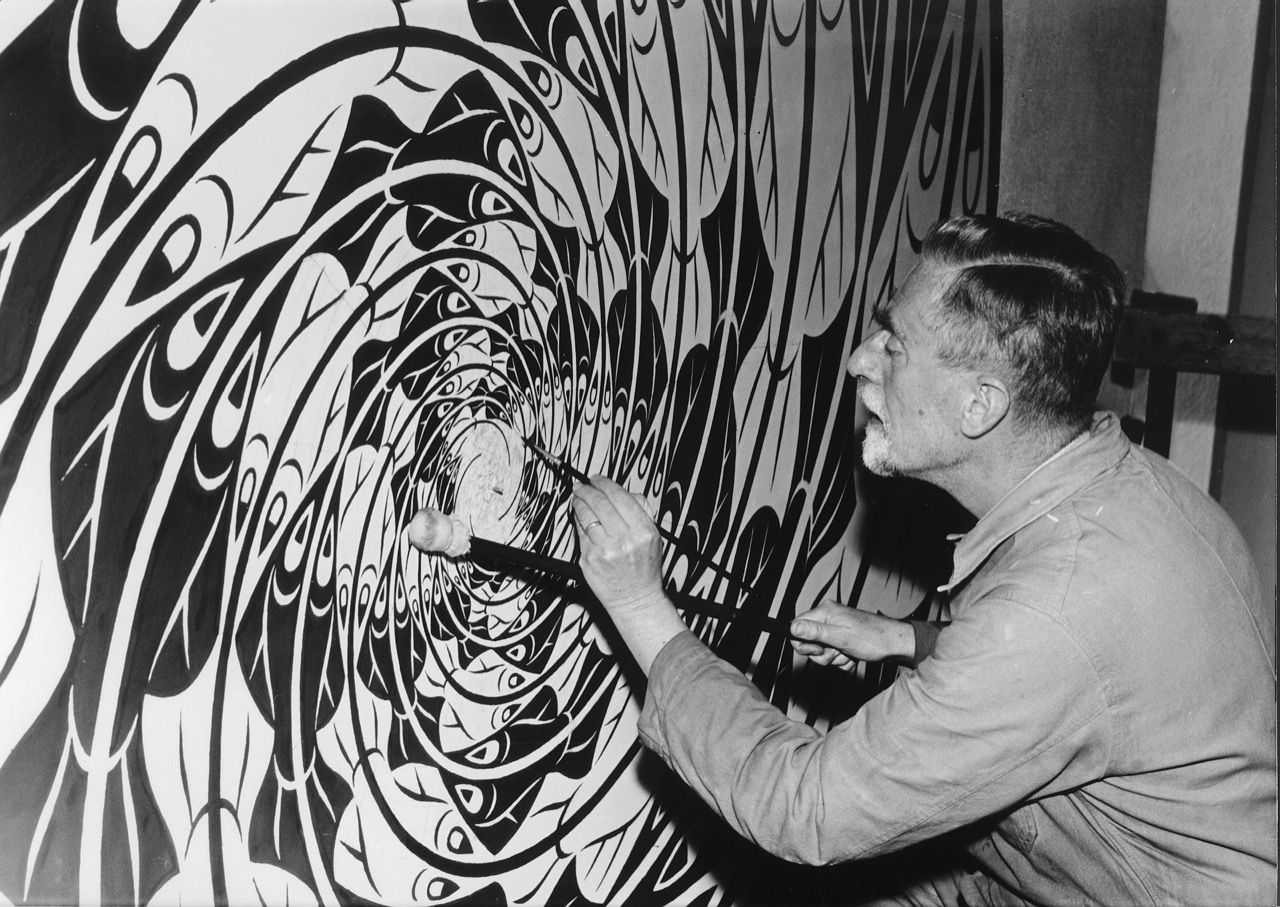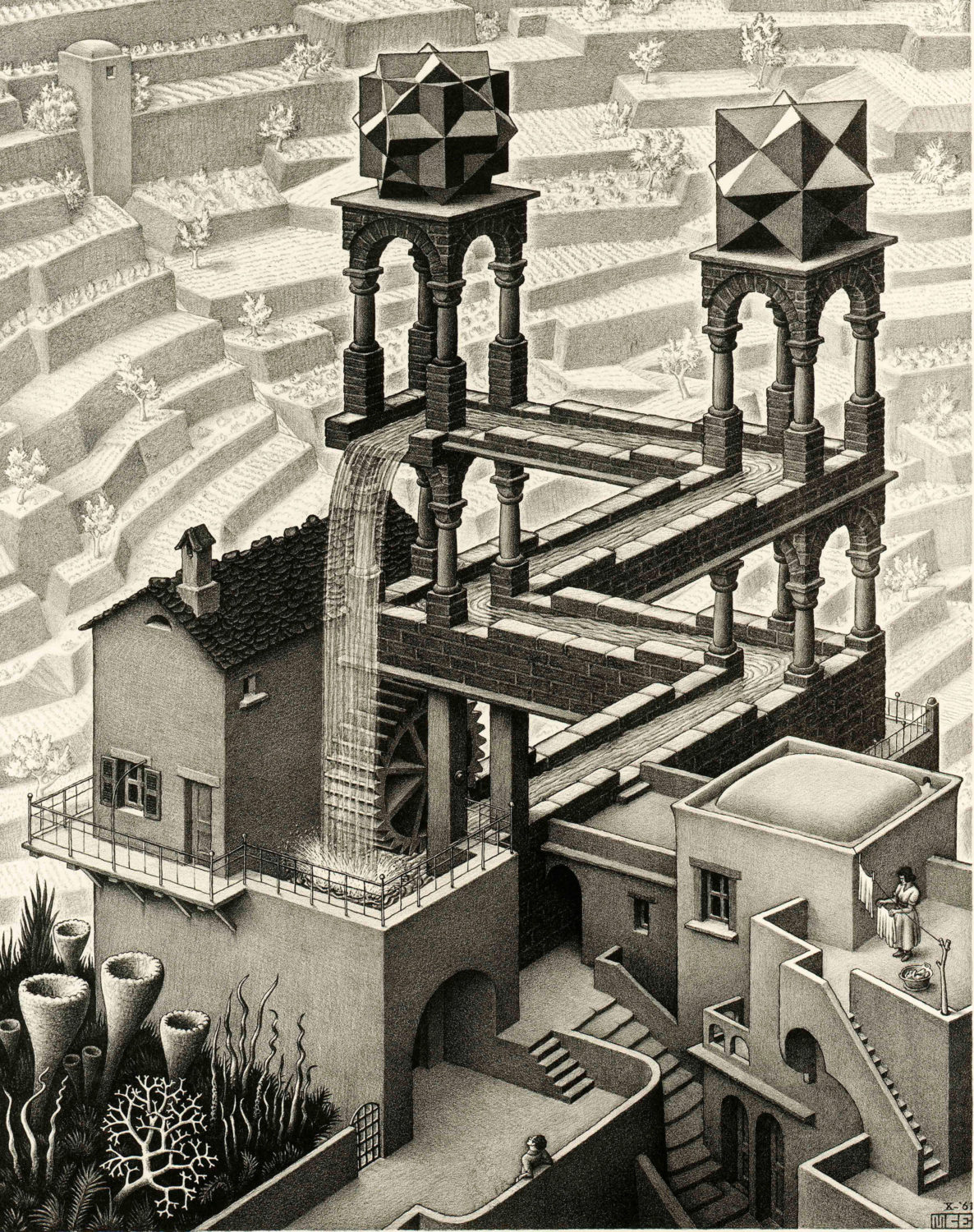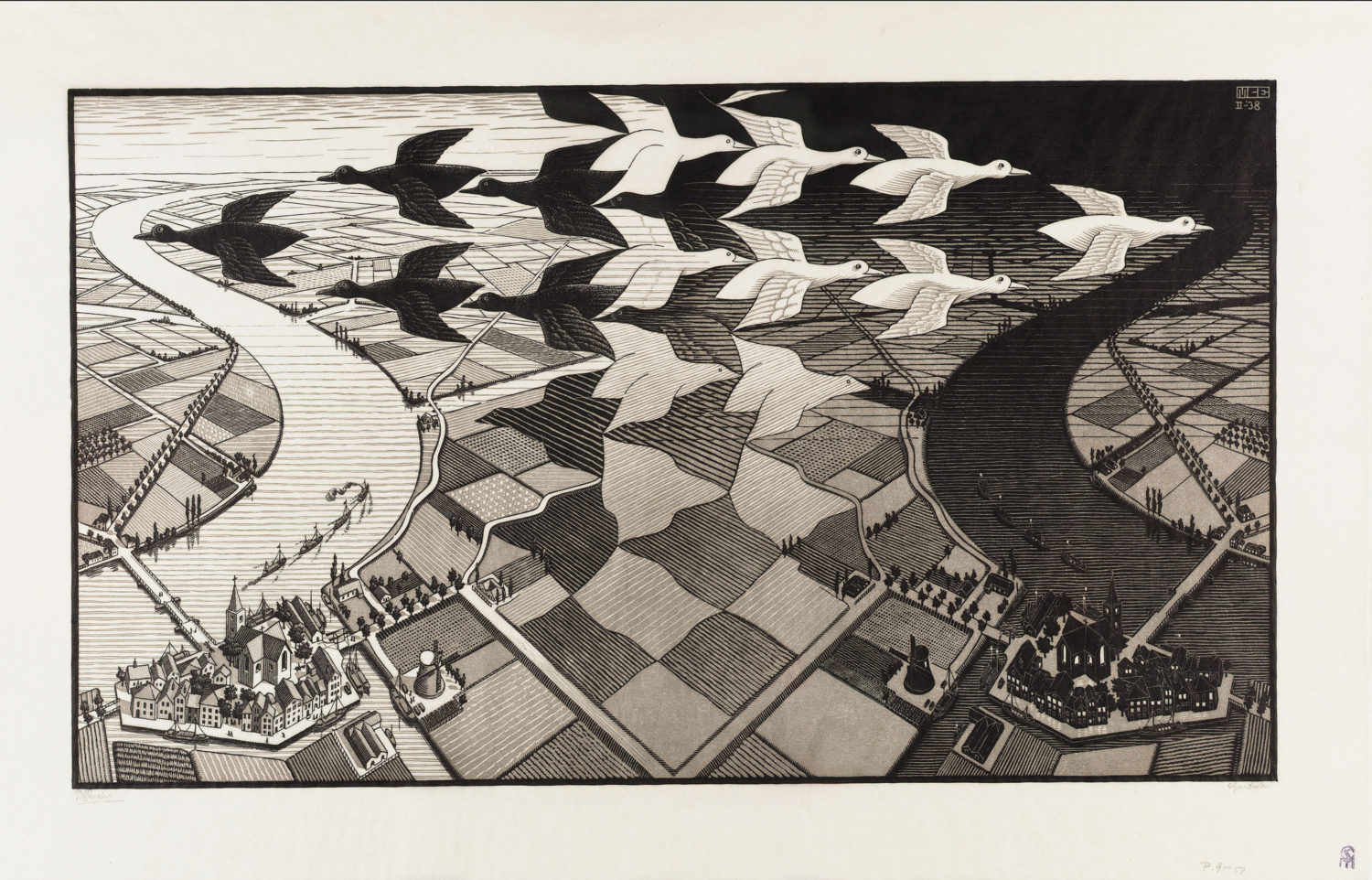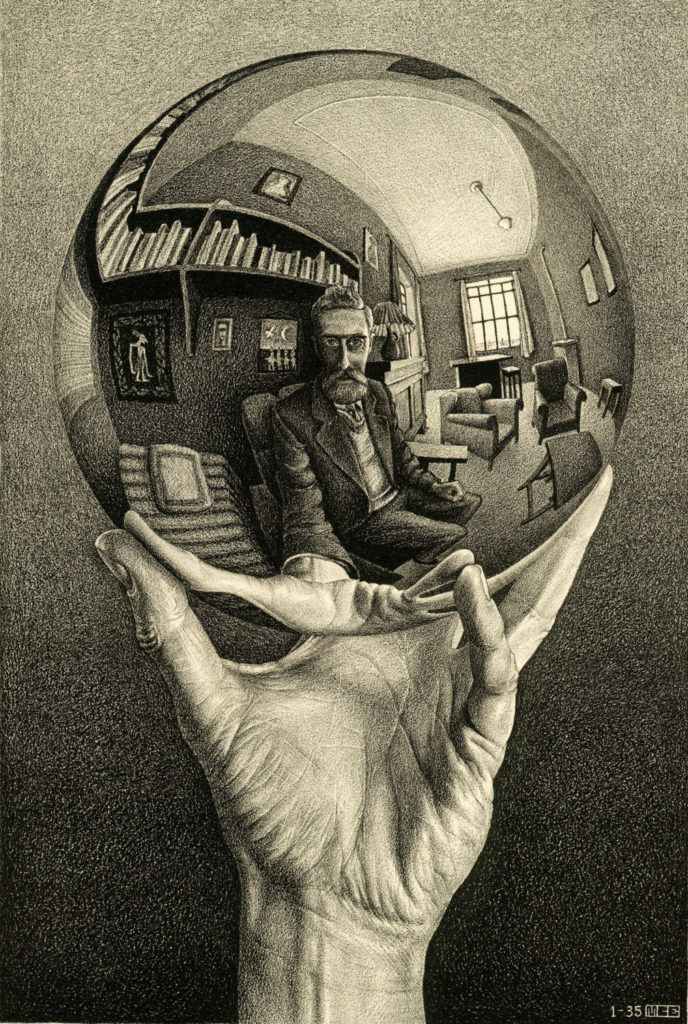M.C. Escher – he of never-ending stairwells, fish morphing into flowers, hands drawing one another, expert use of glass globes, and math-minded imagineer of infinite nesting universes – is an iconic image-maker who is almost universally recognized outside the art world, criminally unrepresented in the art world canon, and, it turns out, not at all the sort of person one might suppose him to be.
His art is on every sort of merch, psychedelic poster and album art, millions of tattoos, has inspired films from Labyrinth to Inception, and graced every college dorm room wall – but it was decades after his death in 1972 before the world finally started getting proper museum shows dedicated to his career. In the new documentary film from Robin Lutz, we find out just how he felt about that – and about a great deal more besides.

M.C. Escher at work in his studio
Journey to Infinity’s imagery is an inventive combination of works and animations of them, spliced with vintage photographs and modern-day artistic interpretations of his most iconic compositions. The narration is almost entirely down to Escher himself – or rather, to his own words, voiced by beloved British actor Stephen Fry. The script is composed from his extensive diaries, excerpts from lofty lectures and personal, frequently caustic correspondence, and lightly punctuated with interviews with his adult children. It deals with subjects ranging from his eternal desire to “visualize infinity,” to his consternation at the popularity of his images among drug-addled hippies, to his suspicion that his estrangement from the art community was because whereas, “Other artists pursue beauty, I pursue wonder.”
 The elaborate, gorgeous choreography of the schisms and interlocutions between art and mathematics is the most recurrent theme throughout the film (other than his hatred of hippies). To hear in Escher’s own words the step-by-step evolution of his vision and the range of his own studies is a marvelous treat. Enchanted by architecture, maths, and the natural sciences, Escher was at heart a printmaker whose impossibly elaborate and finely detailed works are somehow both futurist and baroque, the results of a mastery of analog craft and abstract thought.
The elaborate, gorgeous choreography of the schisms and interlocutions between art and mathematics is the most recurrent theme throughout the film (other than his hatred of hippies). To hear in Escher’s own words the step-by-step evolution of his vision and the range of his own studies is a marvelous treat. Enchanted by architecture, maths, and the natural sciences, Escher was at heart a printmaker whose impossibly elaborate and finely detailed works are somehow both futurist and baroque, the results of a mastery of analog craft and abstract thought.
It may come as a surprise to those who grew up loving Escher’s work that the originals are neither paintings nor drawings, but rather block prints. It may also be a bit shocking to confront his curmudgeonly disposition, however gamely the incomparable Mr. Fry performs his words with an infusion of wry humanism. There’s a love story, and grown children who appreciate the impact of his legacy. If the viewer is already an Escher person, this will be a fascinating, intimate session full of gems.

“Day and Night” by M.C. Escher © The M.C. Escher Company B.V.- Baarn – the Netherlands
At the same time, the film does not function as a useful introduction to Escher from a conventional documentary point of view. Its premise works only for those who already know the art, and the absence of the expected art historians, curators, avid collectors, and publishers who show up to outline the artist’s legacy is a noticeable one. That said, the absence of those voices leaves all the more room for Escher’s own to ring through. And while there may be a lack of canonical presentations on a suitable scale in our institutions, every bookstore, tote bag design shop, and internet browser in the world is well stocked. At heart, this quirky, inventive hybrid of documentary and monologue is dedicated to the exploration of what we don’t know about one of the best-known artists in the world.
For more information, visit M.C. Escher: Journey to Infinity. The film opens February 5 at Laemmle’s Virtual Cinema; laemmle.com.

“Hand with Mirror” by M.C. Escher © The M.C. Escher Company B.V.- Baarn – the Netherlands
Advertising disclosure: We may receive compensation for some of the links in our stories. Thank you for supporting Irvine Weekly and our advertisers.

